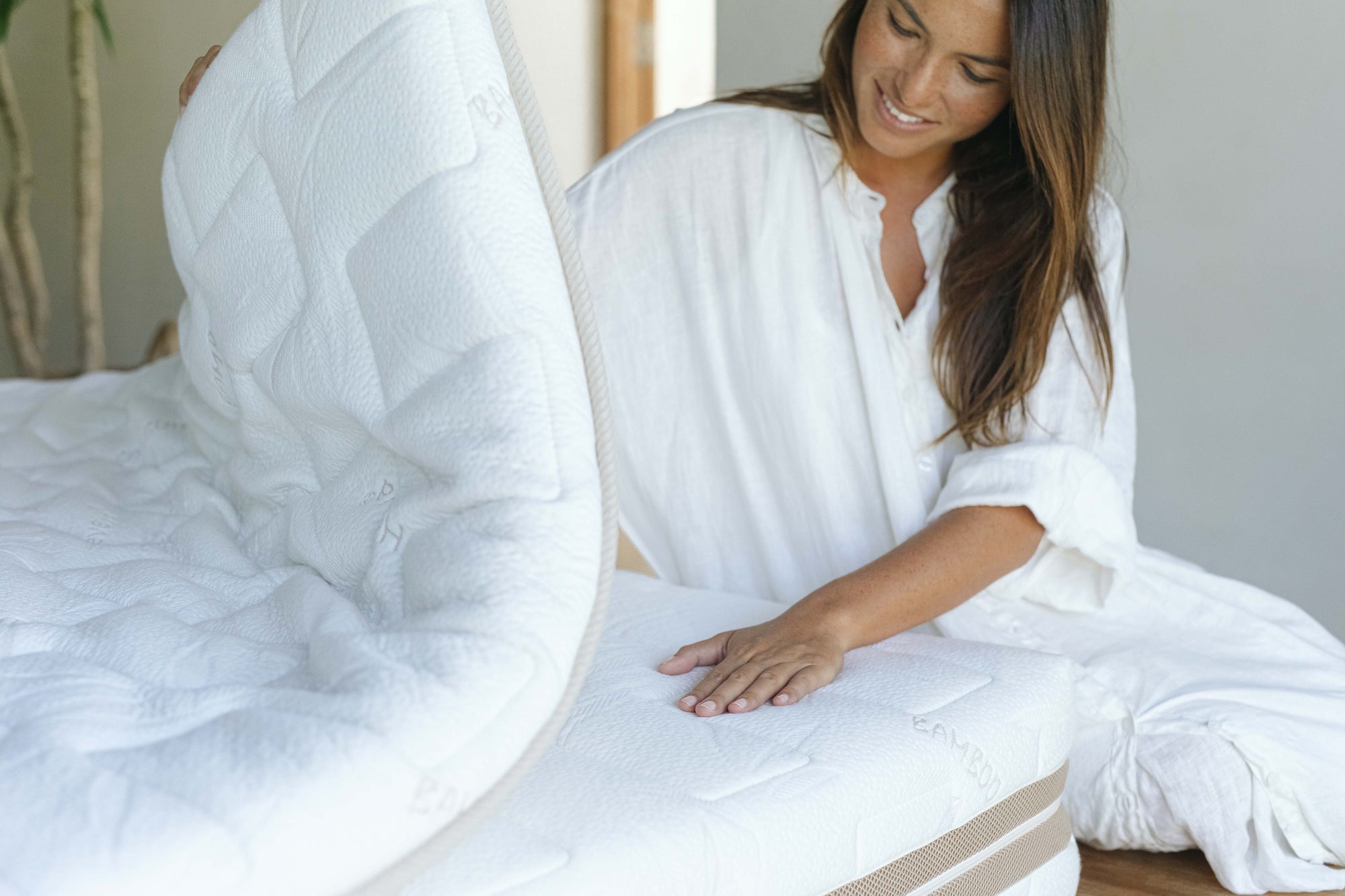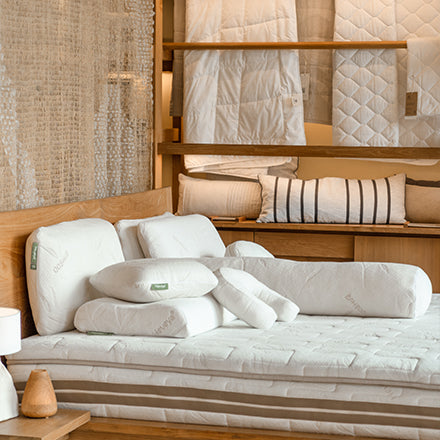Perhaps you’re looking to buy a new latex mattress to replace your old innerspring mattress. Or, this is the first time you’re buying a mattress, and you want to know what the differences are between a latex and innerspring mattress.
To begin with, you’ll want to consider a mattress that gives you the support that you need for a full night’s rest, that is comfortable throughout the night, supports you correctly, and if you sleep with your partner, you don’t feel much of their movement when they move around. Does the mattress help regulate body temperature, and not sleep too warm? And what about if you have allergies? Are the materials used naturally hypoallergenic, or are chemicals required to make them hypoallergenic? Or even fire resistant?
Both types of mattresses are made completely differently, so you may be wondering - why should I choose latex over innerspring? What is the difference between a latex mattress and a coil mattress?

What is a latex mattress?
A latex mattress is a mattress made from, well, just latex. The source of the latex can be natural, from rubber trees (Hevea brasiliensis), or synthetically made from petroleum byproducts (styrene-butadiene rubber). The focus of this comparison article will be on natural latex as Heveya® uses latex sourced from organic and sustainably certified rubber plantations.
There are two common methods to produce a latex mattress from Hevea brasiliensis - the Dunlop method and the Talalay method. (The difference between those is beyond the scope of this article, it’s good to note that Heveya® organic latex mattresses use the Dunlop method). This results in a mattress that is highly responsive, is naturally hypoallergenic and highly breathable - making it the ideal choice for any climate, especially for Indonesia’s humid tropical weather. Another thing to note is that latex mattresses are not the same as memory foam mattresses.
Pros
- Latex mattresses are considerably more environmentally friendly compared to spring mattresses. This is because the latex used comes from a natural growing source. Compare that to the springs in a spring mattress that are made using mined metals using mining proactive - which isn’t environmentally friendly.
- Latex is highly durable and can outlive springs. Many latex mattresses are good for up to (and beyond) 20 years.
- Latex is naturally breathable due to its open cell structure; making it much cooler along with better temperature regulation.
- Due to its elasticity, latex provides pinpoint support. It’s able to contour to the shape of your body, providing great pressure relief and keeping your spine properly aligned - regardless of sleeping position.
- Latex has a natural resistance to many allergens - such as dust mites, bed bugs, mould and bacteria. No added chemicals are needed!
- Latex mattresses can vary in firmness and may offer a firmer surface than padded springs, while still providing good pressure distribution. This can be important for those with medical conditions that benefit from a firmer mattress.
Cons
- It’s comparatively much heavier than a spring mattress. The firmer/denser the mattress, the heavier it gets.
- More of an investment compared to the common spring coil mattresses.
What is an innerspring mattress?
An innerspring mattress is a mattress that is made of many parts. The main component will be the metal springs inside the mattress. These springs can be exposed (bonnell spring) or in a protective casing (pocketed spring). They are also arranged in various ways - from a loose arrangement to a very close and tight arrangement; providing a wide array of firmness and support. To achieve different firmness levels, the diameter of the coils used to make the spring will also vary; the larger the diameter, the firmer it will feel.
Additionally, to keep the springs from digging into your body while you sleep, they will top it off with layers made of foam such as PU foam, memory foam or even latex. These layers are glued together to prevent slipping. Lastly, all these components are sewn together to form an innerspring mattress.
Pros
- Spring mattresses are very common and therefore, a wide variety of choices are available.
- Spring mattresses’ prices can vary greatly. They are generally less expensive than natural latex mattresses. However, high-end spring mattresses can be very costly.
- With the same thickness, a spring mattress weighs much lighter than a latex mattress.
Cons
- Your sleep quality can be badly affected by your partner’s movement. Lower-end spring mattresses transfer motion easily. Furthermore, there's a possibility of squeaking and clunking sounds from springs in response to movement.
- The foams and glues used to secure the various layers are not natural, and tend to off-gas depending on the quality of glues used.
- The amount of space between the springs allows for the accumulation of dust, hair, skin cells, as well as an inviting home for dust mites and bed bugs.
- A spring mattress’ components have lower life spans than latex. Within 10 years, a spring mattress will start to sag as they lose their springiness. The top layer foam is generally thin and gets worn off fast, exposing the metal spring underneath. All of these can lead to uneven pressure points on your body.

Choosing the right mattress is an important long-term investment and should be pondered over carefully. Objectively, it would be in your best interest to choose materials and a brand that supports your health, unique body needs, and the environment! In the end, it is your comfort and support in mind to have a slumber fit for a king.



